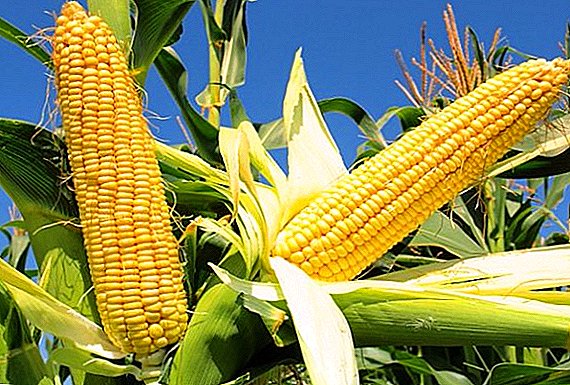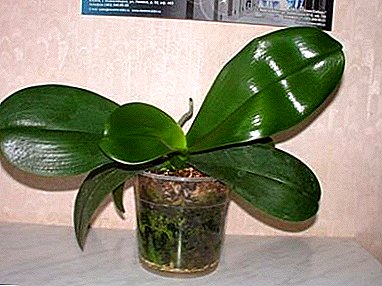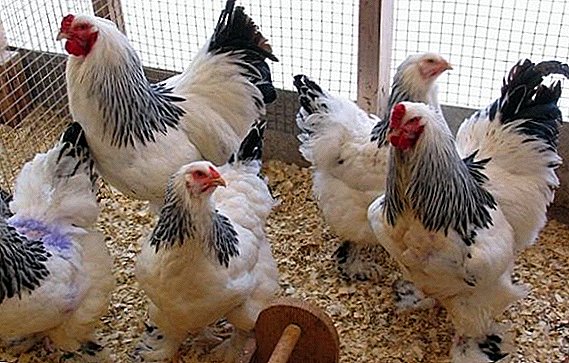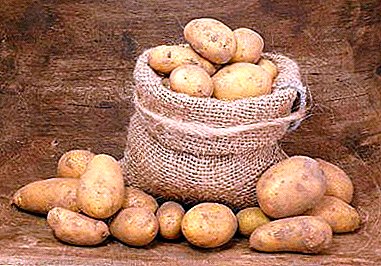
Demand for seasonal potato products remains high throughout the year. If the storage areas are not observed, the tubers lose their taste and quality, become soft, shriveled and dark. To grow a good harvest of potatoes, you have to work hard.
It is also important to provide him with comfortable conditions for proper storage. After all, potatoes must retain their nutritional and taste properties until the new harvest, because we use it for food all year round. With proper storage in proper conditions, this is not very difficult to achieve. Therefore, before putting a vegetable into storage, everything should be taken into account. Potato preparation. Long-term storage of potatoes in an apartment in the winter can only be ensured by proper preparation.
Conditions
Temperature
If the temperature is higher, the tubers will begin to "wake up", prepare for spring planting.
The process of "awakening" potato tubers:
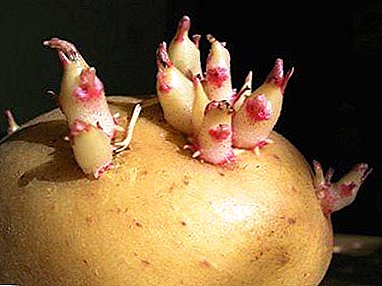 Awakened eyes.
Awakened eyes.- Grow sprouts.
And in the peel (in the upper layer) begins to accumulate solanine (toxic substance). If the temperature is close to 0 degrees, then this will significantly affect the taste of potatoes. He will have a sweet taste that can spoil the taste of any dish.
This is due to the fact that starch turns into sugar at low temperature, while slightly frozen potatoes start to deteriorate very quickly.
Air humidity
Requirements for air humidity during storage of potatoes:
- Optimum humidity should be provided at the level of 80 - 85%, with such parameters, the tubers will not "dry out", that is, they will not lose their mass during storage.
- With dry air, the taste of the potatoes spoil, the tubers become dry and sluggish, juiciness disappears.
- If, on the contrary, in the vegetable storehouse there will be too high humidity, then the appearance of fungal diseases and rotting of root crops are possible.
Other
Storage conditions for potatoes:
- Ventilation must be ensured.
- It is not allowed to cement the bottom of the vegetable store, cover it with flooring, linoleum and other similar materials, because moisture will easily accumulate and mold will gradually appear. It is best to fill the bottom with sand, or fine gravel or pebbles (materials that absorb moisture well).
- Two weeks before laying in the vegetable storehouse of tubers, it must be disinfected. After any treatment, it is necessary to close the vault for two days and then air it thoroughly.
- We can not allow direct sunlight to fall on the potato, because of this it will begin to accumulate in itself a toxic glycoside (turn green), it will be impossible to eat it.
- No “neighbors” are undesirable to this root crop, the only exception can be made for beets (it is better to spread them on top of the potato) - this is a favorable “neighbor”.
Beets perfectly absorbs excess moisture, while this root does not harm it.
- If you have to remove rotten potatoes, then you need to remove not only one tuber, but also those that were lying next to (in close contact, all nearby tubers are infected with an infection, even if they look healthy).
- It is necessary to prevent the penetration into the store from the outside of various pests: rats, mice and slugs.
Difficulties in the storage of potatoes are due to starch and water, which are found in large quantities in tubers.
Stages
 There are several main important stages of storing potatoes in storage, and each of them will require the creation of various modes of humidity and temperature.
There are several main important stages of storing potatoes in storage, and each of them will require the creation of various modes of humidity and temperature.
- The first - Immediately after harvesting, it is necessary to sort the potato tubers and dry them. The duration of this period will be approximately from 7 to 12 days. The temperature required for this stage should be between 15 and 17 degrees.
- Second - This is the so-called healing period, that is, the period when some injuries heal, as well as the ripening of tubers. The temperature here must be raised to 20 degrees and the air humidity should be in the range of 90-95%.
- Third - Further, before laying potatoes for long-term storage, it is necessary to cool it. The temperature should be reduced gradually (every day by 0.5 degrees) and bring it to 3 degrees.
- Fourth - main storage period. The required humidity at this time should be maintained at about 80 - 85%. With periodic ventilation, when the internal and external air mixes, it is just as easy to achieve optimum performance.
- Fifth - Before starting to excavate potatoes, warm up the tubers. This will protect them from unnecessary mechanical damage, as chilled potatoes are quite fragile.
Methods of organizing storage in the winter
In bulk
This storage method is considered the simplest, because it does not require any special capital expenditures.
Typically, this method uses semi-circular ventilation ducts.
The bulk method allows:
- easy to load and unload potatoes;
- fully utilize the entire usable floor space.
Container way
The advantages of this storage option are:
- In one room it is possible to store various varieties of potatoes.
- The ability to organize a gradual shipment to the consumer (throughout the season). After all, the containers (in the right quantity) can be partially moved to warm up before shipment, while the rest remain cooled at this time.
How long can stocks last?
 The duration of storage of the root depends on the variety:
The duration of storage of the root depends on the variety:
- Potatoes of early varieties can be stored no more than 5 months, until December it is better to use it.
- Mid-season and mid-late varieties are stored for about 5-7 months.
- Late varieties can not lose their qualities for 10 months, provided the right content.
Potatoes should only be stored with ripe peel. Storing potatoes in the cellar or basement is the most common way. It is also recommended to isolate potatoes with wooden constructions from concrete or brick basement walls.
As a result, we can say that if desired, potatoes can be kept whole and intact until the next harvest. Just need to make some effort for this. And thanks to modern vegetable stores, built on new technologies, automated ventilation systems for the root easily create optimal conditions for storage.


 Awakened eyes.
Awakened eyes.
